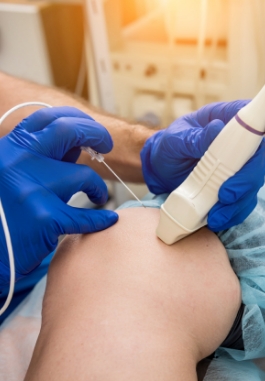 0
0
Knee Radiofrequency Procedure

Knee Radiofrequency Procedure
What is a knee radiofrequency procedure and how does it help with my knee pain?
A knee radiofrequency procedure is a minimally invasive procedure and is typically used for knee pain from osteoarthritis.
How is the knee radiofrequency procedure performed?
The procedure works by:
- Directing a special needle with a gentle electric current to target the pain fibres and destroy these nerves while preserving other important nerves
- It will be done under ultrasound or X-ray guidance
- It then provides pain control long enough for your rehabilitation
The whole procedure requires only a mild sedative and takes around 30 minutes. You may be discharged home with a follow-up visit in 1-2 weeks or you may be admitted for a short course of physiotherapy.
Am I a good candidate for a hip radiofrequency procedure?
This might be the suitable treatment for you if you:
- Have a lot of medical conditions that increases the risk of surgery
- Do not wish to undergo a major surgery
- Are young and worried that the artificial joint will eventually wear out, and you will need another replacement
- Are old and do not wish to go through extensive recovery and rehabilitation
What are the possible risks?
It is a very safe procedure and rarely there is bleeding, nerve damage or infection. You may have some temporary bruising or swelling, or an increase in pain, which typically will go away within 7 days.
How long does the effects of the knee radiofrequency procedure last?
The degree and the length of pain relief will vary depending on each individual. There have been many patients that experience relief from 6 to 12 months, while others will have the relief up to 2 years. Even if the pain recurs, it is usually not so severe. The procedure can be subsequently repeated if the result is good.
Every condition is different, hence it is best to consult a specialist who is experienced in managing such conditions. Reach out to Dr Timothy Thor today.



